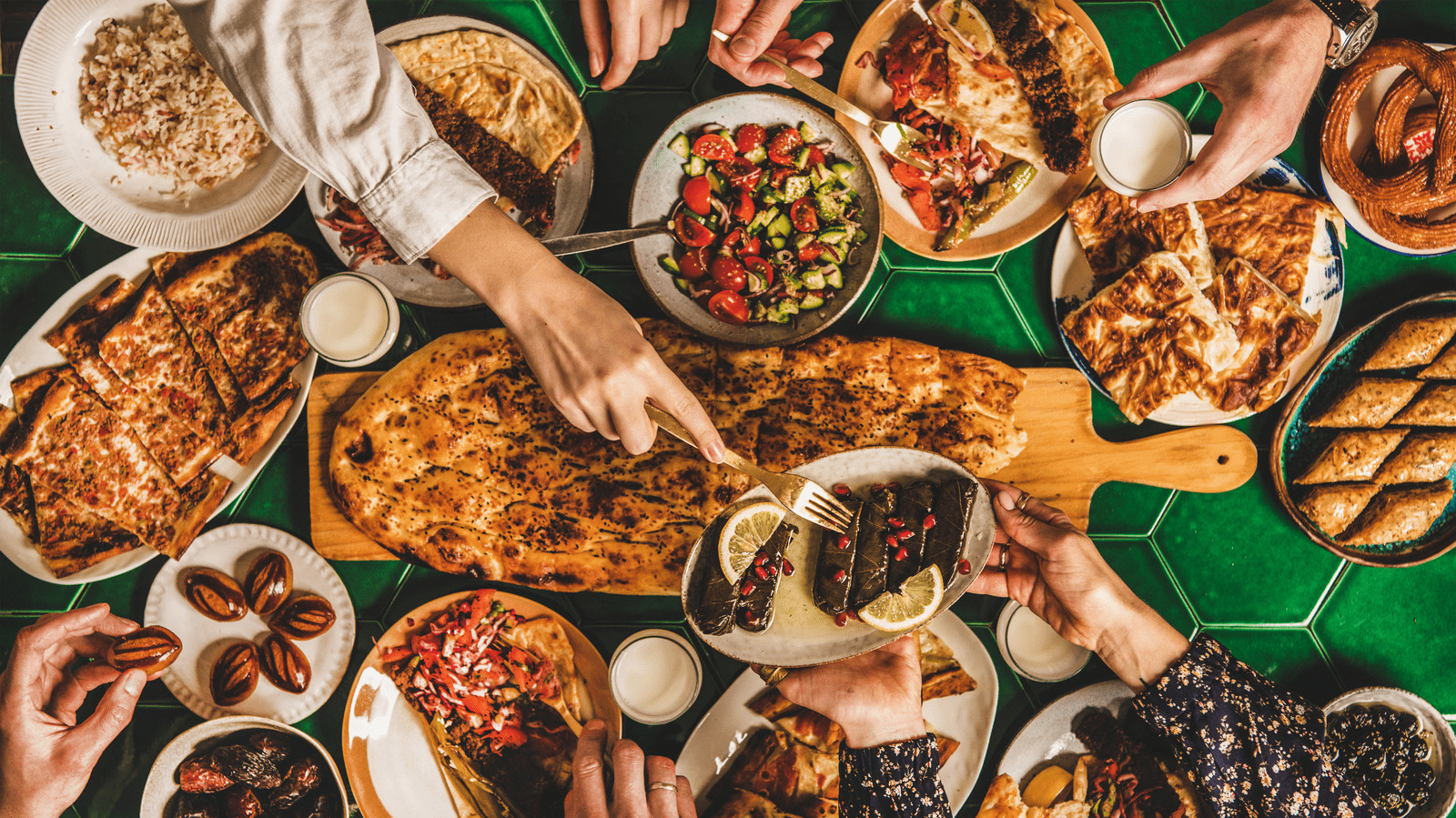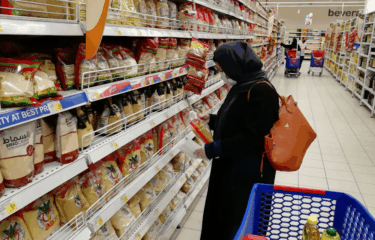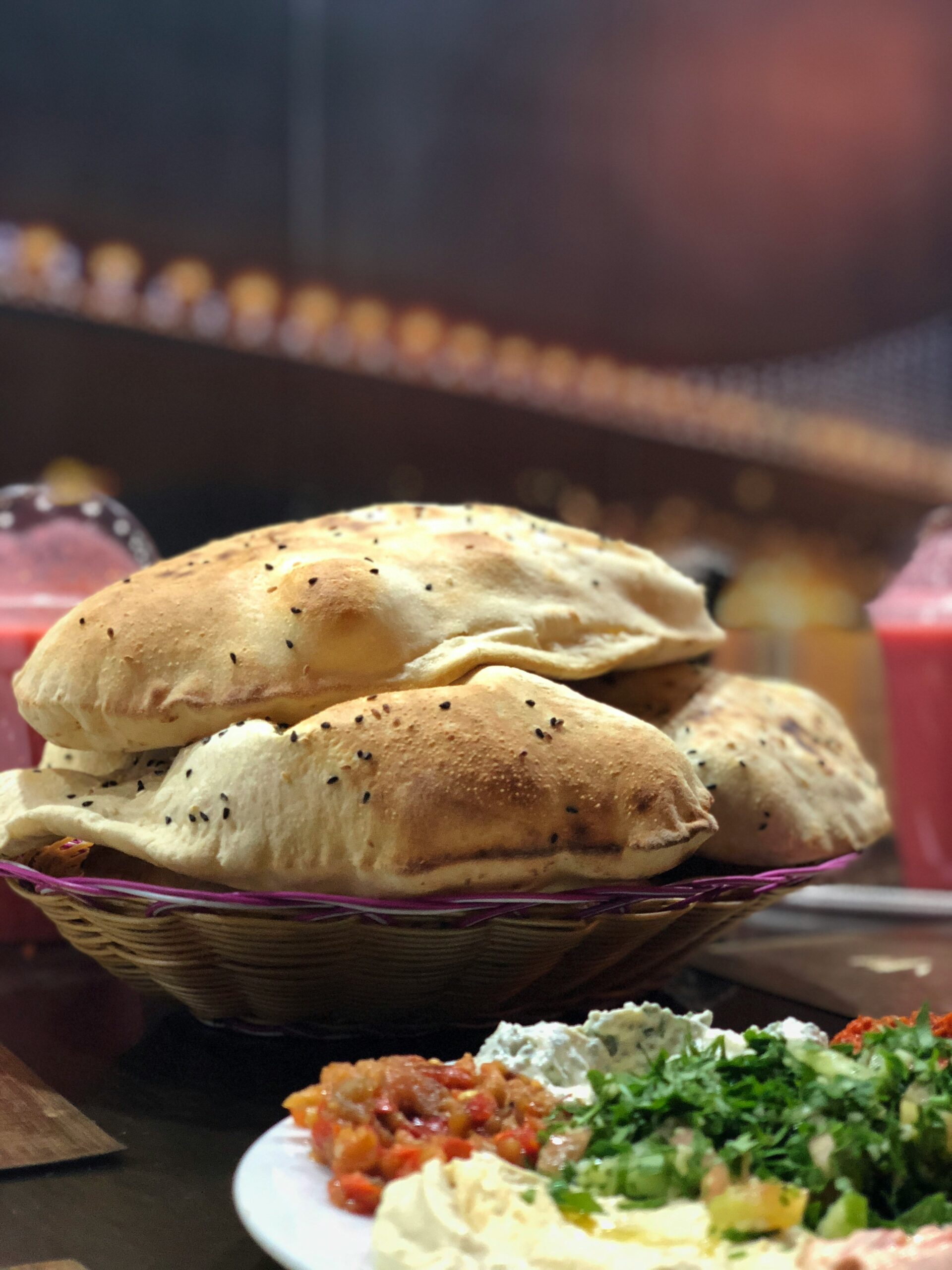As the golden hues of sunset drape the cities and deserts of Saudi Arabia, the sacred call to Maghrib prayer echoes, signaling the most anticipated moment of the day of breaking the fast. Ramadan in the Kingdom is not just a spiritual journey; it is a time of togetherness, warmth, and culinary connections. Each Iftar table tells a story, mixing together centuries-old traditions with modern interpretations, embracing both nostalgia and modernity.
New flavors are emerging, healthier alternatives are reshaping beloved classics, and global influences are adding an unexpected twist to time-honored favorites.
This year, Ramadan food trends in Saudi Arabia are redefining the Iftar experience, blending heritage with a touch of contemporary flair. From timeless family recipes, health-focused portions, and diet-driven dishes, to groundbreaking fusion flavors, let’s explore what’s gracing Saudi tables this Ramadan.
A New Era of Traditional Staples
The foundation of any Saudi Iftar remains unchanged.
Dates and Arabic coffee are still the first to grace the lips of those breaking their fast, the initial burst of natural sweetness a comforting prelude to the feast that follows. But even these revered staples are seeing an evolution. Medjool dates stuffed with artisanal fillings inclusive of spiced pecans, tahini caramel, and even matcha-infused almond butter are making their way onto gourmet Iftar spreads.
Traditional Saudi qahwa, infused with cardamom and saffron, is being reimagined with delicate hints of rose or citrus, offering a contemporary take on the ritualistic opening of the fast.
Beyond the first bites, the soul-warming presence of sambosas continues to dominate the table, but this year, newfound creativity is reshaping this golden, flaky favorite. The classic minced meat and cheese fillings remain popular, but high-end restaurants and home cooks alike are experimenting with unexpected ingredients.
Truffle-infused mushroom sambosas, smoked salmon and labneh variations, and even plant-based renditions using spiced jackfruit or lentils are offering a fresh take on this Iftar essential.
The emphasis is no longer just on indulgence but also on mindful eating, with air-fried versions replacing deep-fried ones, proving that comfort food and conscious choices can indeed coexist.
From Comforting Classics to Global Inspirations
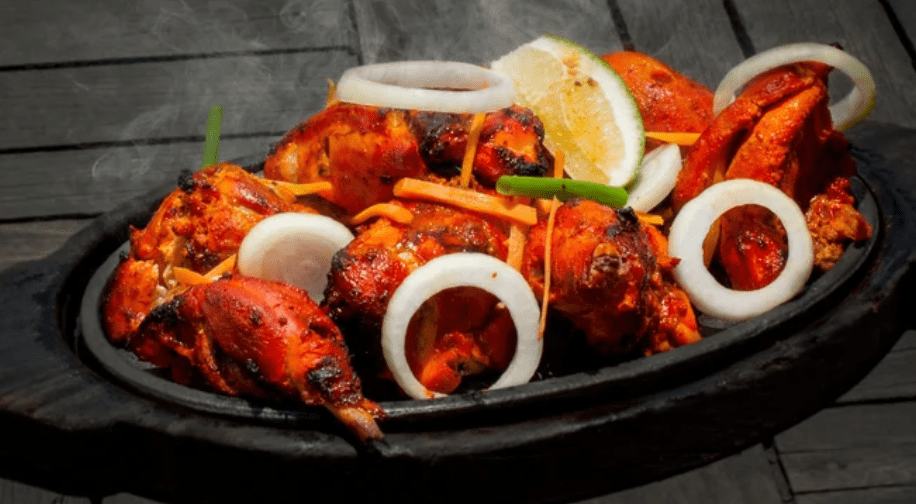
In the heart of every Saudi household, slow-cooked stews like harees and jareesh continue to hold their place, the tender grains melting into broths infused with warm spices. But alongside these traditional dishes, a new breed of fusion cuisine is finding its way into Iftar menus.
The bold flavors of Kabsa, once defined strictly by its spiced rice and roasted meat components, are now embracing international twists. Korean-inspired bulgogi beef Kabsa, spiced with gochujang and sesame, offers a fiery contrast to the familiar flavors.
Meanwhile, seafood versions of Kabsa, infused with saffron and citrusy tamarind, are emerging as lighter yet equally decadent alternatives.
Perhaps the most unexpected yet welcome trend this year is the reinvention of Saleeg, the beloved Hejazi rice dish cooked to creamy perfection in milk. Traditionally served with roasted chicken or lamb, this comforting staple is now appearing with slow-cooked duck, infused with notes of smoked paprika and citrus zest.
Even street food is being reimagined with grilled lamb skewers marinated in black lime and pomegranate molasses, or shawarma wraps served with saffron aioli and pickled figs.
Healthier Choices and Conscious Eating
Health-conscious Ramadan dining is shaping how people in Saudi Arabia prepare and enjoy their meals.
This year, balanced nutrition is a priority. Air-fried options, grilled meats, and nutrient-rich sides are replacing heavier dishes. Instead of deep-fried foule (fava beans), many are choosing roasted chickpea and lentil hummus with fresh whole-grain khubz.
Sugary fruit punches are fading. Laban-based smoothies, sweetened with dates and nuts, are now the go-to. They help with hydration and digestion.
Even desserts are changing. Luqaimat now comes with saffron and tahini caramel. Kunafa is infused with lavender and white chocolate. Gluten-free basbousa, made with almond flour and honey, offers a lighter treat.
Vegan Qatayef is gaining popularity. Filled with cashew-based creams and sweetened with date syrup, it proves that mindful eating can still honor tradition.
Beverages Reimagined – A New Palette of Refreshment
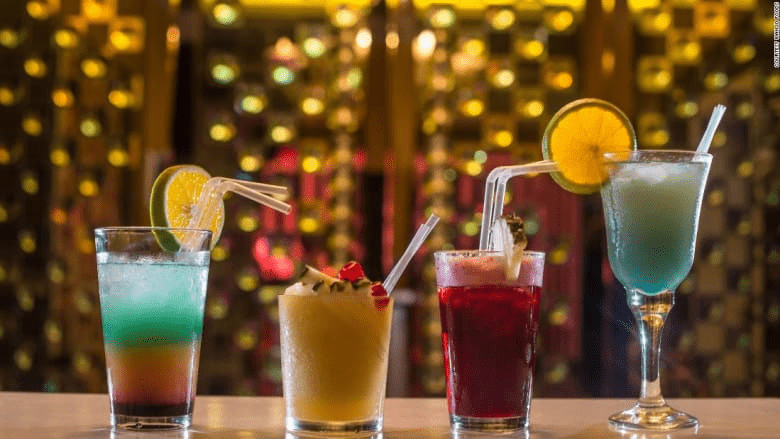
The post-Iftar refreshment ritual is also undergoing an evolution. While beloved staples like Qamar Al-Din, Vimto, and Jallab continue to hold sentimental value, new contenders are making their mark.
Cold-pressed juices infused with hibiscus, mint, and ginger are offering a natural burst of energy. While saffron and almond milk blends are becoming a staple for those seeking comfort in their post-fasting sips.
Fermented drinks, inspired by the ancient art of the Saudi food scene, are also making a resurgence. Probiotic-rich options like tamarind kombucha and spiced kefir are gaining popularity for their digestive benefits.
Meanwhile, specialty coffee culture is merging with Ramadan traditions. There is a rise in creative concoctions such as cardamom-infused cold brews and rosewater-spiced lattes. These blends are not only introducing new flavors but also elevating the Ramadan experience with their delicate, sensory-rich profiles.
A Feast Beyond the Plate – The Ramadan Experience Redefined
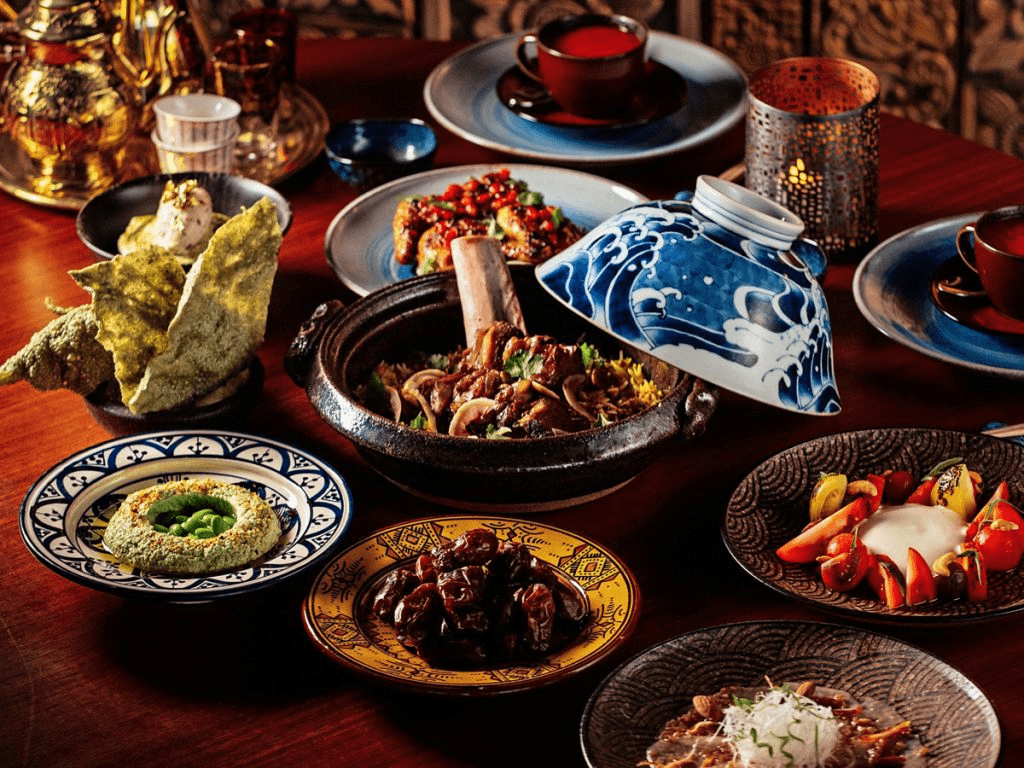
The biggest change in Saudi Arabia’s Ramadan food scene isn’t just about the food. It’s about how people experience Iftar.
Families and friends now gather for more interactive meals. Restaurants create tasting menus that blend Saudi flavors with modern cooking. Each dish tells a story.
Pop-up Iftar markets are booming. Local chefs and street food vendors reinvent classic Ramadan dishes. A new generation gets to experience old favorites in fresh, exciting ways. Even home gatherings are changing. Gourmet catering services offer personalized Iftar boxes. Traditional dishes now come with a touch of modern elegance.
Ramadan still brings warmth, hospitality, and shared meals. But now, the experience feels more immersive and exciting than ever.
The Future of Ramadan Food Trends in Saudi Arabia
Ramadan in Saudi Arabia has always been a time of cherished traditions. But today, the Iftar table is changing. It’s more than a feast. It’s an experience. The rich aromas of old family recipes now mix with bold new flavors.
Every dish tells a story. It holds memories of the past and creativity from the present. It also hints at the future of Saudi cuisine. Slow-cooked stews still bring comfort, but now they come with global twists. Desserts stay delicate and rich, but chefs add surprising new flavors. Each bite connects generations. Each flavor bridges cultures.
FAQs
What are the biggest Ramadan food trends in Saudi Arabia this year?
Chefs are adding a gourmet touch to traditional dishes. Fusion flavors mix Saudi and global cuisines. Healthier Iftar options are growing in popularity. More people are choosing artisanal and locally sourced ingredients.
How are traditional Saudi dishes being reinvented for Ramadan?
Kabsa, Saleeg, and Jareesh now come with premium ingredients. Chefs add international flavors and new presentations. Kunafa and Luqaimat get a twist with unique flavors and textures.
What are some popular health-conscious options for Iftar?
Many people choose plant-based dishes. Air-fried sambosas replace deep-fried ones. Desserts use natural sweeteners. Fresh fruits, herbs, and probiotics make drinks more hydrating.
How is global cuisine influencing Iftar menus in Saudi Arabia?
Sushi-inspired dates bring a creative touch. Truffle-infused sambosas add a rich flavor. Middle Eastern dishes now blend with Asian and European influences. Iftar tables offer a mix of cultures and bold new tastes.

